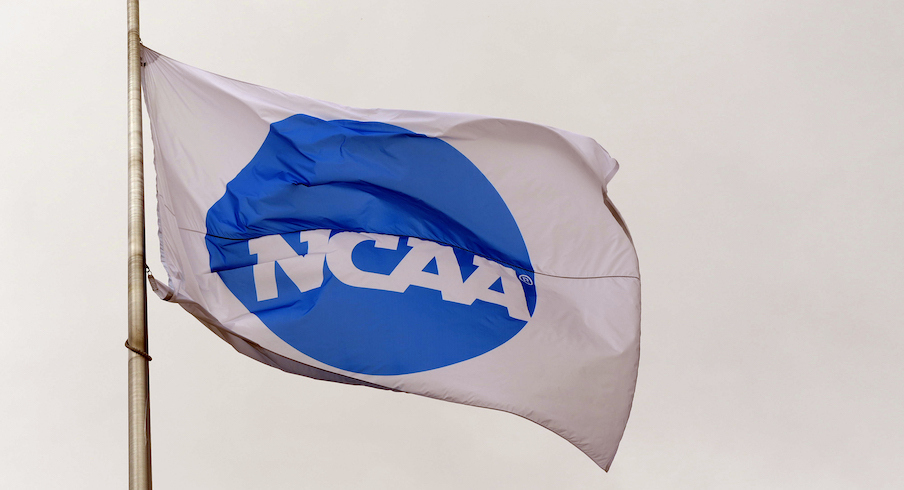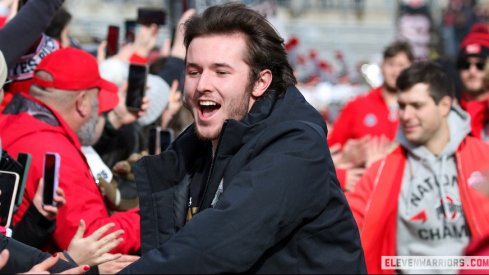The NCAA and the power conferences have formally filed settlement documents that outline their plans for paying former and current athletes.
The NCAA and the five conferences with autonomous decision-making power (ACC, Big Ten Conference, Big 12, Pac-12 and SEC) announced Friday that they filed documents with the Northern District Court of California to settle three class-action lawsuits against the NCAA – House v. NCAA, Hubbard v. NCAA and Carter v. NCAA – and create a model that will pay damages to former athletes and share revenue with current athletes.
As previously announced by NCAA president Charlie Baker, the settlement will pay $2.78 billion to former athletes over the next 10 years. According to Yahoo Sports’ Ross Dellenger, 83% of the back pay is expected to go to an estimated 19,000 football and men’s basketball players, most of them from power conferences, for an average of $120,000 over the next 10 years.
Plaintiffs attorneys released estimates on how they plan to distribute $2.77 billion in back-damages to athletes who played in 2016 to now.
— Ross Dellenger (@RossDellenger) July 26, 2024
Roughly 83% of the money - $2.3B - will go to football & mens basketball. Averages $120,000 per player over 10 years ($12,000 a year). pic.twitter.com/l1xcopRg8W
The settlement also creates a model in which schools will be allowed to share revenue with their athletes. The revenue-sharing cap will be set at 22% of the average media, ticket and revenues for power-conference schools, a number that is expected to start at approximately $22 million. Per Dellenger’s report, the revenue-sharing will increase by 4% for each of the following two years, while the cap will be recalculated at 22% of revenues every three years.
The revenue-share cap (22% of P4 average revenues) escalates by 4% in each Years 2 and 3 before recalculating in Year 4 based on increases in P4 revenues. This 3-year cycle will repeat.
— Ross Dellenger (@RossDellenger) July 26, 2024
Example: If the cap is $20M in Year 1, it moves to $20.8M in Year 2 (+4% increase). pic.twitter.com/Uqcx5IrCq2
Though most of the back pay will go to football and men’s basketball players, it remains uncertain whether Title IX will mandate that schools share an equal amount of future revenue with female athletes as male athletes.
The settlement also eliminates scholarship limits for all sports while establishing new roster limits. College football teams will now be limited to 105 players on their rosters, but will be able to give all of them scholarships; men’s and women’s basketball roster sizes will remain at 15 players, but there will no longer be a limit of 13 scholarships for men’s basketball. Schools will have the discretion across all sports to offer both full and partial scholarships.
NEW: The NCAAs historic expansion of scholarships to extend to full rosters means that roughly 790 new scholarship spots are available across the 40-plus NCAA sports listed in the settlement, per a @YahooSports
— Ross Dellenger (@RossDellenger) July 26, 2024
calculation. https://t.co/MGD0SHm1Y8 pic.twitter.com/dEPrGDDd71
The settlement also states that the new model will create an enforcement structure around NIL that will require all third-party NIL deals of at least $600 to be reported to a clearinghouse that will vet the deals for authenticity by using fair market value standards. Any money funneled by schools through collectives or other outside entities to pay athletes will be subject to the revenue-sharing cap. However, schools will be allowed to help their athletes negotiate NIL deals that will not count against the cap as long they are legitimate endorsement deals approved as authentic.
NIL collectives are going to hate this.
— Pete Nakos (@PeteNakos_) July 26, 2024
According to the settlement, all third-party NIL deals of $600+ must be approved by a clearinghouse that will vet contracts. If not approved, a new third-party arbiter could deem athletes ineligible or a school could be fined. pic.twitter.com/7prYm2HvuM
Schools outside of the power conferences will be allowed to opt out of the new model. They would not be subject to the same roster limits and enforcement mechanism if they choose not to share revenue with their athletes.
The settlement includes an option for termination if college athletes become employees and/or a collective bargaining structure between colleges and athletes is formed.
The full settlement documents can be found here.


